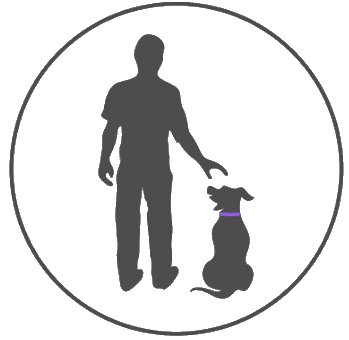Introduction to Dog-Owner Emotional Connection
The Human-Animal Bond
The bond between humans and animals, particularly dogs, is both profound and multifaceted. Known as the human-animal bond, this unique relationship has significant psychological implications. Dogs provide emotional support, companionship, and even therapeutic benefits to their owners. The presence of a dog can alleviate feelings of loneliness, reduce anxiety, and improve overall mental well-being by offering unconditional affection and companionship.
Emotional Contagion
A key mechanism in understanding this bond is emotional contagion, where emotions and stress are transmitted between dogs and their owners. Research indicates that dogs are highly sensitive to their owners’ emotional states. They mirror their owner’s stress levels and emotional states, reflecting a process known as stress synchronization. For instance, heightened owner stress can lead to increased anxiety and reactivity in dogs, creating a feedback loop that escalates stress levels for both parties. This mutual influence underscores the bidirectional nature of emotional transmission in dog-owner relationships.
Understanding Stress Transmission
Recognizing stress transmission between dogs and owners is crucial for fostering a healthy and balanced relationship. Studies have demonstrated that owners with high anxiety levels report more behavioral problems in their dogs. This phenomenon can create a cycle where owner stress leads to problematic dog behaviors, which in turn increases owner stress. For example, a dog with separation anxiety may increase an owner’s stress about leaving the home, leading to further behavioral issues.
Addressing this cycle requires understanding how emotional states are mirrored between dogs and owners and implementing strategies to mitigate stress on both sides. Effective solutions include behavior modification for dogs and stress management techniques for owners. As this complex relationship continues to be studied, recognizing the profound nature of the human-animal bond and its psychological implications remains essential in promoting the well-being of both dogs and their owners.
Understanding Emotional Contagion
How Dogs Mirror Their Owner’s Stress Levels and Emotional States
Emotional contagion plays a pivotal role in the dynamic between dogs and their owners. This phenomenon suggests that dogs can mirror their owner’s stress levels and emotional states. Studies have shown that dogs often exhibit heightened reactivity or anxious behaviors in response to their owner’s emotional condition. For instance, a stressed owner may inadvertently project their anxiety onto their dog, leading to the dog displaying signs of stress such as restlessness, barking, or destructive behavior. This mutual influence creates a feedback loop, where stress levels can escalate for both the owner and the dog.
The Science Behind Stress Synchronization in Dog-Owner Pairs
The scientific community has delved into the mechanisms behind stress synchronization in dog-owner pairs. Cortisol, a hormone related to stress, has been a focal point in many studies. Research indicates that there is a significant correlation between cortisol levels in dogs and their owners. For example, a study on cortisol synchronization revealed that during stressful situations, elevated cortisol levels in owners corresponded with increased stress levels in their dogs. This finding highlights the physiological underpinnings of stress transmission within dog-owner pairs, suggesting that emotional contagion is more than just behavioral—it is biological.
The Bidirectional Nature of Emotional Transmission
The relationship between dog behavior and owner stress is not unidirectional; rather, it is bidirectional. This means that while dogs can mirror their owner’s stress, owners are equally affected by their dog’s stress-related behaviors. Problematic behaviors in dogs, such as aggression or separation anxiety, can elevate stress levels in their owners, leading to a cycle of stress transmission. Research indicates that owners with high anxiety levels often report more behavioral problems in their dogs. For instance, a dog with separation anxiety can exacerbate an owner’s anxiety about leaving home, perpetuating a cycle of mutual stress.
This circular stress pattern is critical to understanding and addressing the emotional health of both dogs and owners. By recognizing the bidirectional nature, owners and professionals can develop comprehensive strategies to mitigate stress on both sides, fostering a healthier relationship.
As we explore how these emotional states influence each other, it becomes clear that managing stress effectively is key to improving the well-being of both dog and owner. From here, we will delve into how dog behaviors impact owner stress, and, conversely, how owner stress affects dog behavior.
Impact of Dog Behavior on Owner Stress
Common Problematic Behaviors
Dogs can exhibit various problematic behaviors, such as aggression, excessive barking, and separation anxiety. These behaviors don’t just affect the dogs; they significantly impact their owners as well. For instance, a dog that barks excessively may embarrass the owner in social situations, while a dog with separation anxiety can make it difficult for the owner to leave the house, causing distress for both parties involved.
Emotional and Social Consequences
Owners dealing with behavioral issues often experience a range of emotions, from guilt to frustration. They may feel helpless when they can’t control their dog’s actions, which can worsen their stress levels. Socially, these issues can lead to isolation. Owners may avoid social gatherings or public places due to the fear of judgment from others.
Financial and Time-Related Stressors
Addressing these problematic behaviors typically requires significant financial and time investments. For instance, enrolling a dog in a specialized training program or seeking veterinary advice can be costly. Beyond the financial aspect, the time it takes to consistently train a dog or to attend training sessions adds an extra layer of stress, especially for owners with already busy schedules.
Emotional Impact on Owners
Owners often bear a heavy emotional burden when their dogs exhibit problematic behaviors. The guilt and helplessness felt during these times are exacerbated in social interactions, where the fear of being judged looms large. This emotional toll can affect their overall mental health, increasing anxiety and stress levels.
Take, for instance, the case of an owner with a hyperactive dog. This behavior not only strains the owner physically but also mentally, as they continually try to manage and rectify the behavior, leading to burnout.

Financial and Time Investments
Addressing dog behavior issues isn’t just emotionally taxing; it also comes with financial and time commitments. The cost of professional training, veterinary consultations, and even specialized equipment can quickly add up. On top of financial strain, the time required for consistent training sessions and behavior management efforts can be daunting, making it hard for owners to strike a balance in their daily lives.
How do dogs affect their owners mental health
The relationship between dog behavior and owner stress is a complex interplay that significantly impacts mental health. Dogs, known for their acute sensitivity to human emotions, can mirror their owner’s stress levels, leading to a cycle of mutual anxiety. This phenomenon, often referred to as emotional contagion, highlights how dogs affect their owners’ mental health by reflecting and amplifying the emotional states they perceive. For instance, an owner experiencing high stress may inadvertently transmit these feelings to their dog, resulting in increased anxiety or behavioral issues such as excessive barking or restlessness. This feedback loop not only exacerbates the dog’s stress but also heightens the owner’s anxiety, creating a challenging environment for both parties.
Moreover, the impact of dog behavior on owner stress extends beyond emotional contagion. Problematic behaviors in dogs, such as aggression or separation anxiety, can lead to significant emotional and social consequences for owners. These behaviors often require substantial time and financial investments to address, adding layers of stress to the owner’s life. The emotional toll of managing a dog’s behavioral issues can lead to feelings of guilt, frustration, and isolation, further affecting the owner’s mental health. Understanding how dogs affect their owners’ mental health through these behaviors underscores the importance of addressing both canine and human stressors to foster a healthier relationship.
To mitigate the stress cycle between dogs and their owners, it is crucial to implement effective behavior modification strategies and stress management techniques. Positive reinforcement training, consistent routines, and professional support can help alleviate problematic behaviors in dogs, thereby reducing stress for owners. Additionally, owners should prioritize their own mental well-being through mindfulness practices, physical exercise, and support groups. By recognizing and addressing the bidirectional nature of stress transmission, both dogs and their owners can experience improved mental health and a stronger bond.
Conclusion and Transition
Understanding the immense stress that problematic dog behaviors can impose on owners is essential for addressing the issue holistically. Tackling these behaviors requires time, money, and emotional investment, yet it is crucial for the well-being of both the dog and the owner. By recognizing the mutual influence inherent in the dog-owner relationship, we can better equip both parties to handle stress, ultimately fostering a healthier, happier bond.
How Owner Stress Affects Dog Behavior
Understanding how stress in dog owners affects their pets’ behavior is crucial for fostering a healthy and happy relationship. High levels of owner stress often lead to increased anxiety and fear-related behaviors in dogs. This connection can result in a cycle of stress that exacerbates behavioral issues and undermines training efforts.
Owner Anxiety and Increased Dog Behavioral Problems
Owners dealing with stress and anxiety may unintentionally communicate these emotions to their dogs. Dogs are incredibly attuned to their owner’s emotional state, and high levels of owner stress can lead to increased anxiety and fear in dogs. This emotional contagion can manifest in various problematic behaviors such as excessive barking, aggression, and separation anxiety.
A study by Dolan et al. found that dogs mirror their owners’ stress levels, leading to heightened reactivity or anxious behaviors. This synchronization of stress underscores the profound impact owner emotions have on dog behavior.
Inconsistent Training Due to Owner Stress
Effective dog training requires consistency, patience, and a calm demeanor. However, when owners are stressed, maintaining consistency in training can become challenging. Stress can lead to inconsistent application of training techniques, confusing the dog and reinforcing undesirable behaviors. Inconsistent training can result in a breakdown of the training process, making it difficult to modify problematic behaviors effectively.
Owners’ emotional states could directly influence the success of behavior modification efforts. Dogs thrive on routine and consistency, and disruptions caused by owner stress can exacerbate behavioral issues, creating a frustrating cycle for both parties.

Reinforcement of Unwanted Behaviors
When owners are stressed, they may inadvertently reinforce unwanted behaviors in their dogs. For example, an owner dealing with anxiety might comfort a fearful dog during a storm, which the dog then interprets as positive reinforcement for its anxious behavior. This unintentional reinforcement makes it more challenging to address and correct the behavior in the long term.
Somppi et al. emphasized that the reinforcement of unwanted behaviors due to owner stress could lead to a lasting cycle of stress and problematic behaviors. Addressing both the owner’s emotional well-being and the dog’s behavior is essential for breaking this cycle and promoting mutual well-being.
Transition to Stress Management and Behavior Modification
Understanding the relationship between owner stress and dog behavior is the first step in addressing the underlying issues and improving the emotional health of both parties. Effective behavior modification strategies, combined with stress management techniques for owners, can significantly reduce stress and enhance the human-animal bond.
How dogs act when the owner is stressed
When considering how dogs act when the owner is stressed, it’s essential to understand the concept of emotional contagion. Dogs are incredibly perceptive creatures and can pick up on their owner’s emotional states through subtle cues such as body language, tone of voice, and even scent. Research from the University of Bristol highlights that the smell of human stress acts as an “emotional contagion” in dogs, leading them to make more pessimistic decisions. This means that a stressed owner might inadvertently cause their dog to exhibit signs of anxiety or fear, such as excessive barking, restlessness, or avoidance behaviors.
Moreover, the physiological connection between dogs and their owners plays a significant role in this dynamic. Studies have shown that dogs can sense changes in their owner’s cortisol levels, a hormone associated with stress. When an owner experiences heightened stress, their dog’s cortisol levels may also rise, resulting in increased anxiety and stress-related behaviors. This synchronization of stress responses underscores the profound bond between dogs and their owners, where each party’s emotional state can significantly impact the other.
Understanding how dogs act when the owner is stressed is crucial for maintaining a healthy relationship. Owners should be mindful of their emotional states and consider implementing stress management techniques not only for themselves but also for their pets. By recognizing the signs of stress in dogs, such as changes in posture, excessive yawning, or lip-licking, owners can take proactive steps to alleviate stressors and create a more harmonious environment for both themselves and their furry companions.
Breaking the Stress Cycle
Stress in the dog-owner relationship is an intricate and interconnected issue that requires a multifaceted approach to break. Addressing this cycle involves effective behavior modification strategies for dogs, stress management techniques for owners, and engaging in joint stress-reducing activities. Let’s delve into these aspects to find solutions that benefit both you and your furry companion.
Effective Behavior Modification Strategies for Dogs
Behavior modification is critical for addressing problematic behaviors such as aggression, excessive barking, and separation anxiety. Implementing the right strategies can create a more harmonious environment and reduce stress for both you and your dog.
- Positive Reinforcement: Rewarding your dog for good behavior with treats, praise, and affection can encourage the continuation of these behaviors. Positive reinforcement is a proven method to reduce stress and increase desirable behaviors in dogs.
- Professional Training Programs: Engaging a professional dog trainer to design a personalized training program can address specific behavioral issues effectively. These programs often incorporate techniques that promote consistency and calmness, which are essential for success.
- Consistency is Key: Consistent training reinforces desired behaviors and reduces confusion in dogs. Sticking to a routine makes it easier for dogs to understand expectations, reducing their anxiety and improving behavior.
Stress Management Techniques for Owners
Just as important as modifying your dog’s behavior is managing your own stress. After all, reducing stress for yourself can have a calming effect on your dog.
- Mindfulness and Relaxation: Techniques such as meditation, deep breathing exercises, and yoga can significantly reduce stress levels. Practicing these daily can help you remain calm and composed, making it easier to handle dog-related challenges.
- Support Groups and Therapy: Joining a support group for dog owners facing similar challenges can provide emotional support and practical advice. Therapy, either individually or in group settings, can also help manage stress more effectively.
- Physical Exercise: Regular physical activity, whether it’s going for a run or participating in a fitness class, helps lower cortisol levels and improves mood. Find an exercise you enjoy and make it a part of your daily routine.
Benefits of Joint Stress-Reducing Activities
Engaging in activities that both you and your dog can enjoy together not only reduces stress but also strengthens your bond. These activities provide opportunities for both of you to relax and have fun.
- Daily Walks: Taking your dog for a walk is a simple yet effective way to alleviate stress. It provides physical exercise, fresh air, and an opportunity to strengthen your bond through shared experiences.
- Agility Training: This form of training is both mentally and physically stimulating for dogs and can be a fun way for you to interact and play. Not only does it encourage good behavior, but it also provides a sense of accomplishment for both you and your dog.
- Interactive Play: Activities like fetch, tug-of-war, or puzzle toys can keep your dog mentally stimulated while providing a fun and engaging way to reduce stress. Games that involve problem-solving can improve your dog’s cognitive function while also lowering anxiety.
By incorporating these strategies, you can begin to break the cycle of stress between you and your dog. Addressing both behavioral and emotional aspects will not only enhance the well-being of your pet but also improve your own mental health, leading to a happier and healthier relationship.
Evidence-Based Solutions
Research Findings on Successful Behavior Modification Programs
Addressing the stress cycle between dogs and their owners requires evidence-based solutions. Research indicates that behavior modification programs are effective in reducing stress for both dogs and owners. These programs often incorporate positive reinforcement techniques to encourage desirable behaviors in dogs. A study showed that dogs trained with positive reinforcement exhibited significantly less stress and anxiety-related behaviors.
Moreover, structured behavior modification programs for dogs have led to substantial reductions in owner stress levels. Research demonstrated that these programs effectively minimize problematic behaviors like aggression and separation anxiety, which in turn alleviates owner stress. Engaging in consistent and positive training not only improves canine behavior but also enhances the overall well-being of their owners.
Case Studies Demonstrating Improved Outcomes
Real-world examples further underscore the benefits of evidence-based solutions. For instance, a family with a reactive dog implemented a comprehensive training and stress management program. The outcome was remarkable—both the dog’s behavior and the family’s stress levels improved significantly. This case highlights the profound impact of targeted training programs and stress management strategies.
Another study focused on the cortisol synchronization between dogs and their owners. It revealed that elevated cortisol levels in owners correlated with increased stress in their dogs. By implementing behavior modification strategies, the synchronized stress levels diminished, leading to improved emotional health for both parties.
The Role of Professional Training and Support in Stress Reduction
Professional training and support play a crucial role in breaking the stress cycle. Certified dog trainers and behaviorists can tailor training programs to address specific behavioral issues. These professionals provide guidance and support to owners, ensuring consistent and effective training techniques. Engaging professional help can lead to more rapid and sustainable improvements in both dog behavior and owner well-being.
Additionally, support groups for owners of dogs with behavioral issues offer valuable resources and emotional assistance. These groups provide a platform for sharing experiences, advice, and coping strategies, thereby reducing the sense of isolation and stress that many owners feel.
Effective stress management for owners is equally vital. Techniques such as mindfulness, meditation, and physical exercise significantly alleviate owner stress, which in turn benefits their dogs. Participating in joint activities, like daily walks and agility training, enhances the bond between dogs and owners while reducing stress levels.
Recognizing that addressing both dog behavior and owner stress is essential for a healthier dog-owner relationship, the aforementioned evidence-based solutions have proven effective. By integrating these strategies, owners can foster a supportive environment that promotes mutual well-being and strengthens the human-animal bond.
Challenges and Future Directions
Limitations in Measuring and Addressing Dog-Owner Stress
Understanding the science behind dog-owner stress involves navigating several challenges. One noteworthy limitation is the subjectivity in measuring stress. Many assessments of owner stress and dog behavior are self-reported, which can introduce bias and inconsistencies in the data. For instance, an owner’s perception of their stress level may vary greatly from an objective measure, leading to inaccurate results. Similarly, interpreting a dog’s behavior relies heavily on the owner’s observations, which can be subjective and influenced by their emotional state.
The complexity of the relationship between dogs and their owners also poses a challenge. Various factors, including genetics, past traumas, and the environment, play a significant role in shaping both dog behavior and owner stress. This intricate interplay of elements makes it difficult to pinpoint specific causes and effects. As a result, interventions and solutions might need to be highly personalized to be effective.
Another significant limitation is the accessibility of resources. Not all owners have access to professional training programs or stress management resources. Many owners might find it financially burdensome to seek professional help or invest in comprehensive behavior modification classes. This disparity can lead to unequal opportunities for addressing stress and improving dog-owner relationships.

The Need for Accessible Resources and Support Programs
Addressing dog-owner stress effectively requires making resources and support programs more accessible to everyone. There is a need for affordable, community-based training and stress management programs that can reach a broader audience. Local animal shelters and community centers could play a critical role in hosting workshops and providing resources to dog owners.
Additionally, support groups for owners dealing with troublesome dog behaviors can offer emotional support and practical advice. These groups can be a valuable resource for sharing experiences and strategies, reducing the feeling of isolation that many owners face.
Public awareness campaigns can also help in educating dog owners about the signs of stress in both themselves and their pets, and the importance of seeking help. Raising awareness might encourage more owners to seek out resources that they might not have known were available.
Future Research Opportunities
Looking forward, there are several promising avenues for research that can deepen our understanding of dog-owner stress and improve outcomes. One important area is the study of long-term effects of behavior modification programs on both dogs and owners. This can provide insights into the sustainability of these programs and their impact on mental health over time.
Research into the genetic and environmental factors that influence stress responses in dogs can also offer valuable information. By understanding the biological and situational triggers of stress, more targeted and effective interventions can be developed.
Another potential research direction is the development of stress-reduction programs designed specifically for dog-owner pairs. These programs could include components such as joint therapy sessions, mindfulness training, and physical activities tailored to enhance the bond and reduce stress for both parties.
Finally, studying therapy programs that involve both dogs and owners can yield significant insights into how mutual activities can be designed to alleviate stress and strengthen the bond. This research can contribute to creating more holistic approaches to managing dog-owner stress.
By addressing these limitations and exploring new research opportunities, we can foster healthier and happier relationships between dogs and their owners. Both parties can benefit from a deeper understanding and more effective management of their shared emotional experiences.










